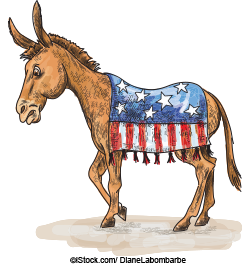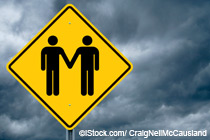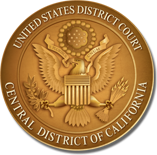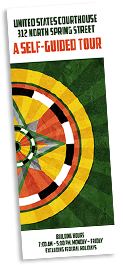The 1970s
The 1970s was the decade of lava lamps and shag carpets. At the same time, it was also a study in contradictions: austerity, campy colors, nature-loving hippies, and high-tech futurism. War and social change continued to shape society. In addition to the many radical ideas of the Sixties that were accepted into American life and culture, disillusionment in government, advances in civil rights, and the women’s movement were major trends. Early in the decade, Pasadena residents Jim Spangler, Skipper Rostker, and Wilton Clarke filed Spangler v. Pasadena Board of Education in 1968 on behalf of their daughters. The plaintiffs alleged that the school district’s high schools practiced unconstitutional segregation, resulting in the United States Justice Department intervening in the district. In 1970, U.S. District Judge Manuel L. Real found the school board guilty of intentional acts of segregation and ordered the school district to implement the district-wide “Pasadena Plan” to remedy the effects of past racial discrimination in its schools. Six years later, the U.S. Supreme Court upheld the decision, making Pasadena the first city west of the Mississippi to engage in court-ordered busing.
 The Cold War, and the fight against Communism, was still raging during the Seventies. In 1977, 23-year-old Christopher Boyce was arrested for selling thousands of U.S. classified documents to Russian agents, including plans for a spy satellite system to communicate with agents in dangerous areas. His accomplice and friend, Andrew Daulton Lee, was arrested in December 1976 in front of the Soviet embassy and confessed to being a spy. U.S. District Judge Robert J. Kelleher convicted both men of espionage in separate trials, U.S. v. Boyce and U.S. v. Lee. Boyce was sentenced to forty years in prison and Lee was sentenced to life in prison. The story of their cases later was depicted in the best-selling book and film The Falcon and the Snowman.
The Cold War, and the fight against Communism, was still raging during the Seventies. In 1977, 23-year-old Christopher Boyce was arrested for selling thousands of U.S. classified documents to Russian agents, including plans for a spy satellite system to communicate with agents in dangerous areas. His accomplice and friend, Andrew Daulton Lee, was arrested in December 1976 in front of the Soviet embassy and confessed to being a spy. U.S. District Judge Robert J. Kelleher convicted both men of espionage in separate trials, U.S. v. Boyce and U.S. v. Lee. Boyce was sentenced to forty years in prison and Lee was sentenced to life in prison. The story of their cases later was depicted in the best-selling book and film The Falcon and the Snowman.
America entered the Vietnam War in the Sixties as part of containment, a policy designed to stop the spread of Communism. The war was heavily protested in the United States and in 1971, Daniel Ellsberg and Anthony J. Russo, two researchers at the Santa Monica-based RAND Corporation, copied classified government papers that documented the United States’ involvement in the Vietnam War. Ellsberg wanted to pressure the government into ending the unpopular war and therefore released the “Pentagon Papers” to the New York Times and other newspapers. The pair was indicted for conspiracy and espionage. In 1973, U.S. District Judge William M. Byrne Jr., declared a mistrial in United States v. Ellsberg and dismissed all charges, citing “improper government conduct.” The trial brought anti-Vietnam War protesters such as Jane Fonda, who talked about POWs at a rally, to the Los Angeles courthouse.
 The 1970s carried on the theme of social change from the 1960s. The Democratic National Convention of 1968 was an event that changed the history of the Democratic Party for years to come and resulted in a massive demographical shift in the landmark “realignment” election of 1968. In March 1969, Abbie Hoffman, Jerry Rubin, and Tom Hayden, members of a group known as the Chicago Seven (originally the Chicago Eight), were indicted and charged with conspiracy, inciting to riot, and other crimes. The charges stemmed from their involvement with riots that occurred in Chicago during the 1968 Democratic National Convention. On appeal, every conviction was reversed. The events in Chicago were followed closely by the nation, so the trial of the three Chicago Seven members brought protesters to the steps of the Los Angeles federal courthouse in 1970.
The 1970s carried on the theme of social change from the 1960s. The Democratic National Convention of 1968 was an event that changed the history of the Democratic Party for years to come and resulted in a massive demographical shift in the landmark “realignment” election of 1968. In March 1969, Abbie Hoffman, Jerry Rubin, and Tom Hayden, members of a group known as the Chicago Seven (originally the Chicago Eight), were indicted and charged with conspiracy, inciting to riot, and other crimes. The charges stemmed from their involvement with riots that occurred in Chicago during the 1968 Democratic National Convention. On appeal, every conviction was reversed. The events in Chicago were followed closely by the nation, so the trial of the three Chicago Seven members brought protesters to the steps of the Los Angeles federal courthouse in 1970.
 The 1970s also saw the first lawsuit in the United States seeking recognition of a same-sex marriage by the federal government. In 1975, Richard Adams and his partner Anthony Sullivan married in Colorado and were issued a marriage license. Thereafter, Sullivan, an Australian citizen, applied for permanent residency, which was denied by the Immigration and Naturalization Service (INS) on the grounds that a bona fide marital relationship cannot exist between two homosexuals. During this time, the Colorado Attorney General’s Office declared the marriage invalid, saying the license had been issued by mistake. In the 1979 case of Adams v. Howerton, U.S. District Judge Irving Hill upheld the decision of the INS, finding that under both Colorado and federal law, “spouse” referred to a relationship between a man and a woman and therefore the couple was not legally married to each other. The Ninth Circuit also affirmed the decision.
The 1970s also saw the first lawsuit in the United States seeking recognition of a same-sex marriage by the federal government. In 1975, Richard Adams and his partner Anthony Sullivan married in Colorado and were issued a marriage license. Thereafter, Sullivan, an Australian citizen, applied for permanent residency, which was denied by the Immigration and Naturalization Service (INS) on the grounds that a bona fide marital relationship cannot exist between two homosexuals. During this time, the Colorado Attorney General’s Office declared the marriage invalid, saying the license had been issued by mistake. In the 1979 case of Adams v. Howerton, U.S. District Judge Irving Hill upheld the decision of the INS, finding that under both Colorado and federal law, “spouse” referred to a relationship between a man and a woman and therefore the couple was not legally married to each other. The Ninth Circuit also affirmed the decision.
In yet another instance of change and protest, construction on Interstate 105 was halted due to a lawsuit brought against the freeway based on environmental concerns and the effect on the communities in the freeway’s path. The 17.3 mile freeway was an integral part of Caltrans’ master plan for the Southern California freeway system during the 1960s. In Keith v. Volpe, under a consent decree issued by U.S. District Judge Harry Pregerson in 1979, the state and Federal Highway Administration agreed to reduce the length and width of the freeway and to finance social programs intended to mitigate the damage of the proposed freeway.
Back in Los Angeles, the Seventies saw the arrival of the Manson cult. In 1971, 12-year-old Bartek Frykowski filed a wrongful death lawsuit for the murder of his father, Voityck Frykowski, a producer-director from Poland. Voityck, along with actress Sharon Tate and three others, was murdered by cult leader Charles Manson and his followers Susan Atkins, Patricia Krenwinkel, Charles “Tex” Watson, and Linda Kasabian. Manson had convinced his followers that committing murder was necessary to start a race war. In Frykowski v. Manson, presided over by U.S. District Judge Jesse W. Curtis Jr., Bartek was awarded $500,000 in compensatory damages.
 In 1976, in yet another significant case, Universal Studios and Walt Disney Productions sued Sony for copyright infringement because purchasers of Sony’s Betamax video recorder used the device to record and play back the plaintiffs’ television programs. In 1979, U.S. District Judge Warren J. Ferguson ruled in favor of Sony, stating that the copying was “fair use.” The Ninth Circuit eventually reversed the decision. In 1984, the U.S. Supreme Court reversed the Ninth Circuit’s decision in favor of Sony.
In 1976, in yet another significant case, Universal Studios and Walt Disney Productions sued Sony for copyright infringement because purchasers of Sony’s Betamax video recorder used the device to record and play back the plaintiffs’ television programs. In 1979, U.S. District Judge Warren J. Ferguson ruled in favor of Sony, stating that the copying was “fair use.” The Ninth Circuit eventually reversed the decision. In 1984, the U.S. Supreme Court reversed the Ninth Circuit’s decision in favor of Sony.

